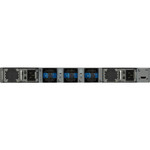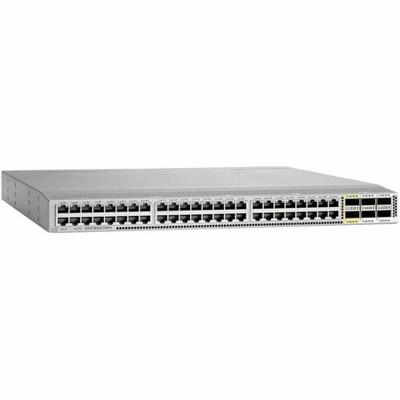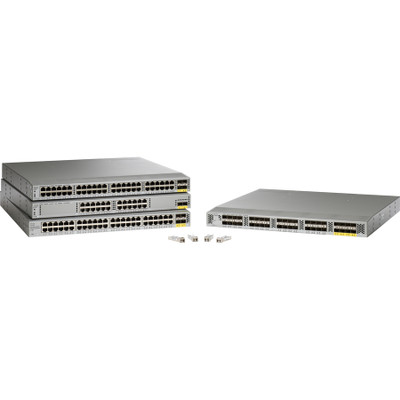Simplify your data center access architecture and operations with the Cisco Nexus® 2300 platform fabric extenders, the successors to the industry's widely adopted Cisco Nexus 2000 Series Fabric Extenders. The Cisco Nexus 2300 platform with its Cisco® fabric extender architecture provides a highly scalable unified server-access platform across a range of connectivity options such as 100 Megabit Ethernet; 1, 10, and 40 Gigabit Ethernet; unified fabric; copper and fiber connectivity; and rack and blade server environments.
The platform offers excellent support for migration from traditional 1 Gigabit Ethernet to 10 and 40 Gigabit Ethernet and virtual machine - aware unified fabric technologies.
The Cisco Nexus 2300 platform maintains all the existing Cisco Nexus 2000 Series features, including a single point of management, high availability with virtual PortChannels (vPC), vPC+, Enhanced vPC, and LAN and SAN convergence using Fibre Channel over Ethernet (FCoE). With the addition of true 40 Gigabit Ethernet support, deep buffers to handle bursts of traffic common in today's data center, and unified port capability (on 2348UPQ with 5600 only starting 7.3 release), the Cisco Nexus 2300 platform is suitable for highly virtualized, automated, and cloud environments.
The Cisco Nexus 2300 fabric extenders provide a 1-rack-unit (1RU) energy-efficient platform with a choice of front-to-back (port-side exhaust) and back-to-front (port-side intake) airflow options that offer 100 Megabit Ethernet; 1, 10, and 40 Gigabit Ethernet; Fibre Channel (on 2348UPQ with 5600 only starting 7.3 release); and FCoE for a broad range of traditional data center and large-scale virtualized cloud deployments.
The Cisco Nexus 2300 platform provides:
- Architecture flexibility with simplified operations: The fabric extender support unified ports (on 2348UPQ with 5600 only starting 7.3), allowing flexible deployment and LAN and SAN convergence in a heterogeneous architecture. A common, scalable, and adaptive architecture across data center racks and points of delivery (PoDs) supports a variety of server options, connectivity options, physical topologies, and evolving needs. A single point of management and policy enforcement using upstream Cisco Nexus switches eases the commissioning and decommissioning of server racks through zero-touch installation and automatic configuration of fabric extenders.
- Highly scalable server access: Today's data centers require massive scalability to manage the increasing number of servers and higher demand for bandwidth from each server. The Cisco Nexus 2300 platform meets this need with higher-density ports facing servers and the parent switch without any changes to the existing cable plant. The 100 Megabit, 1 and 10 Gigabit Ethernet server access, and the 40 Gigabit network access are scalable, with no reliance on Spanning Tree Protocol. The Cisco Nexus 2300 platform can also provide up to 2:1 oversubscription.
- Enhanced buffer for applications: In today's data center, application teams require the network to be flexible and capable of handling the rapid growth of applications. The Cisco Nexus 2300 platform provides deep shared buffers (32 MB) to absorb bursts of traffic from storage devices and a wide variety of applications, such as multicast feeds, voice traffic, video traffic, and healthcare applications. These deep buffers also provide flexibility to expand your network as your needs change. The shared buffers are also very useful in situations in which one or more servers are consuming most of the bandwidth in highly oversubscribed environments.

















































